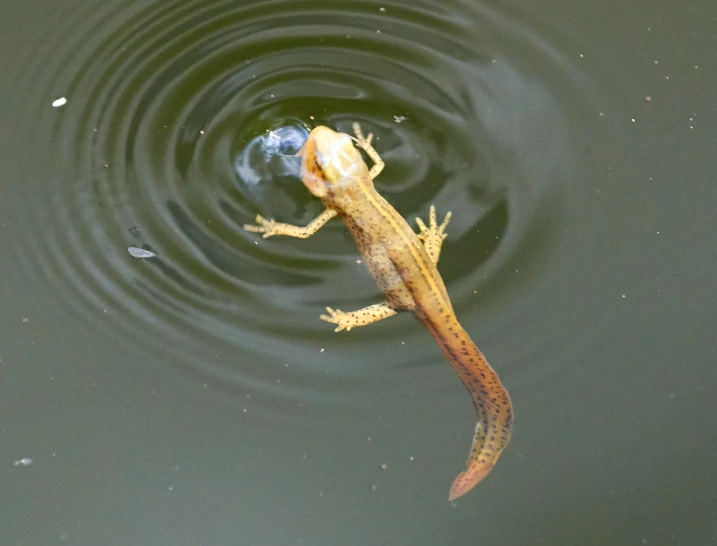You bend down near a pond and notice a small newt slipping through the water. You might start wondering: are newts actually more aquatic than other salamanders?
Yes, newts usually spend more time in water than most salamanders. While many salamanders live much of their adult lives on land, newts often go back to ponds and streams. Some barely leave the water once they grow up.
What Makes a Newt Different From a Salamander?
Here’s the first thing to know: all newts are salamanders, but not all salamanders are newts. Salamanders are the big family. Newts are just one branch of it.
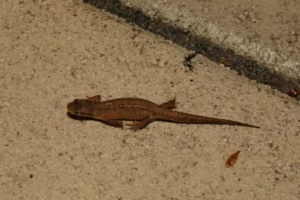
The difference isn’t just about looks, it’s about how they live. Salamanders tend to hide in soil, forests, or burrows.
Newts, on the other hand, spend more time swimming in ponds and wetlands.
Why Are Newts Seen as More Aquatic?
Newts stick to water more because:
-
They breed in ponds or streams, often staying there for weeks or months.
-
Adults often stay close to water, not just passing through.
-
Their tails are shaped for swimming, working more like fins than digging tools.
So when people picture salamanders, they usually think of damp forest floors. But when they picture newts, they think of water.
Do All Salamanders Avoid Water?
Not really. Some, like axolotls, never leave it. Others, like tiger salamanders, live mostly underground but still need ponds to breed.
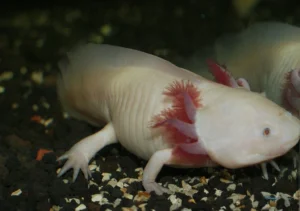
Still, compared to salamanders as a whole, newts are the ones most often staying in water once they’re adults.
When Do Newts Leave the Pond?
They don’t stay there all the time. Eastern newts, for example, turn into bright red “efts” and live on land for years. But when they grow into adults, they go back to water and usually stay there.
That cycle (land as a young newt, water as an adult) sets them apart from most salamanders.
Which Newt Species Almost Never Leave Water?
Some barely step onto land once grown:
-
Smooth newts (Europe): spend most of the year in ponds.
-
Japanese fire belly newts: live and breed in water year-round.
-
Eastern newts (North America): after the eft stage, adults spend much of their lives swimming.
For them, water isn’t just part of life. It is life.
Do Salamanders Have the Same Courtship Shows?
Not usually. Male newts fan their tails, wave their legs, or flash bright spots underwater. These dances only work in ponds.
Some salamanders have mating displays too, but they usually happen on land or in shallow water. Newts stand out because theirs almost always happen in water.
How Bodies Show the Difference
Look at a newt, its flat tail, smooth skin, and sometimes even webbed toes all make swimming easier.

Now look at many salamanders. Rounder tails, chunkier bodies. Better for crawling under leaves or digging than gliding through water.
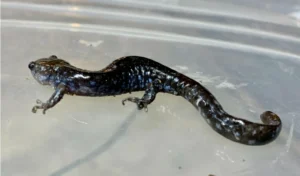
Their bodies show where they belong.
Why Do Newts Keep Going Back to Water?
It’s simple: reproduction. Eggs must be laid in water, often attached to plants or tucked among stones. Without ponds, their life cycle can’t finish.
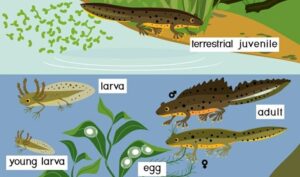
Most salamanders also breed in water, but they leave quickly. Newts stay. They keep feeding, mating, and living there long after.
Do Newts Survive Without Ponds?
Not really. They can spend time on land, sure, but they need water to finish their cycle. If ponds dry up, newts disappear.
Some salamanders survive underground for long stretches, but newts are tied to ponds more tightly.
How Seasons Change Things
In spring and summer, ponds are full of newts swimming, feeding, and breeding. Come fall, some may slip onto land and hide under damp leaves or soil.
In winter, they might hibernate under water or on land, depending on the species. Either way, ponds stay central.
Why Water Defines Newts More Than Salamanders
Think of salamanders as forest-floor wanderers. Think of newts as pond-dwellers. Both need water, but newts keep going back.
That habit (not just visiting, but living in water) is what makes them the more aquatic cousin.
Conclusion: Are Newts More Aquatic?
Yes. Newts are more aquatic than salamanders in general. They breed, feed, and often live in water long after other salamanders have left.
Their bodies and behaviors show it clearly.
So next time you see a newt gliding through a pond, remember: it’s not just passing through. For newts, water is more than a stop. It’s home.
Hi, my name is Ezra Mushala, i have been interested animals all my life. I am the main author and editor here at snakeinformer.com.

